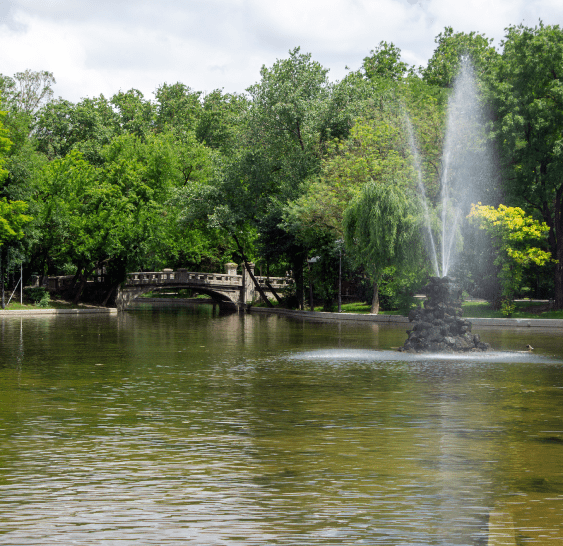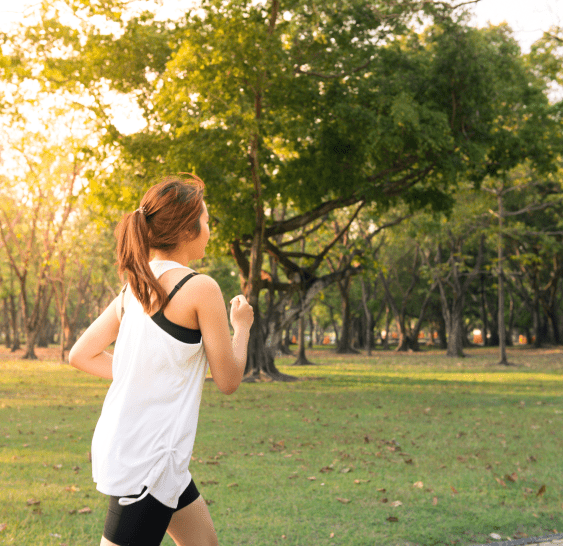Bucharest has an intriguing mix of magnificent 19th century Belle Époque architecture, relatively bland communist-era buildings and, of course, modern glass structures. The city suffered the most changes, usually for the worse, during the communist era, when many old boulevards, palaces, and houses and villas were replaced by communist apartment buildings. Back in the 60’s, the communists built many industrial facilities around Bucharest, which required workers. Thus, the government attracted people living in the countryside by promising jobs and new apartments.
The sudden population increase was a mess, and strained the city’s infrastructure, but fortunately, authorities largely left the city’s historic parks alone. Today, this is a true blessing, as it prevents the city’s green spaces from getting too crowded. Here are some of the most important, in and around the city’s center.

King Michael I Park
Covering around 190 hectares, and surrounding Lake Herastrau, this is one of Bucharest’s largest parks, popular with tourists and locals alike due to its location, great lakeshore restaurants and cafes, and its general landscape. Commonly known as Herastrau Park, this verdant area in north-central Bucharest, bordering upscale neighborhoods popular with expats like the French Quarter, Primaverii, and Aviatorilor, this park sees a lot of action.
The park’s top attraction is the National Village Museum, the perfect outdoor reconstruction of the authentic Romanian village, from medieval times to today. You can visit over 300 authentic structures, including houses, wooden churches, wine presses, and sawmills, from all of Romania’s historic provinces. To the west, you can find Beraria H, Eastern Europe’s largest beer hall, with 3,000 seats inside and out. To the south are Rose Island and the Japanese Gardens, while the park’s eastern side features upscale lakeside restaurants, and the northeast has playgrounds, plus Children’s Island. Other attractions are the Elisabeta Palace (a former royal residence), Diplomat golf course, a yacht club, sports club, and open-air Summer Theatre.
Cismigiu Gardens
Cismigiu Park is the Bucharest’s oldest public garden, founded in 1847 by the director of the Vienna Imperial Gardens. Located very close to the Old Town, this 16 hectare English-style garden surrounds an artificial lake and functions like the city’s Central Park. Although the gardens are quite small compared to the city’s major parks, they’re very serene and beautiful. Bordered to the south by the General City Hall and to the north by the gorgeous Kretzulescu Palace, the gardens are famous for their roses, numerous romantic bridges, and for the Rotonda Scriitorilor (“Writer’s Alley”), a circular alley featuring statues of the most famous Romanian writers.
Popular for rowboats in summer and ice skating in winter, the gardens are also known for their plane trees, the circular Monte Carlo restaurant in the middle of the lake, and the ruins of an 18th century monastery hiding an underground tunnel that once extended to the banks of the Dambovita River.


King Carol I Park
King Carol I, probably modern Romania’s greatest king, also had its longest reign, as his rule lasted 48 years, from 1866 to 1914. The park that bears his name was built in 1906 by French landscape architect Édouard Redont to celebrate the 40th anniversary of the king’s 40th coronation. The central lake is crossed by a large bridge that continues with a grand staircase towards the top of the nearby hill. The hill was once occupied by the Palace of Arts and Exhibitions, but the building was destroyed in a 1943 earthquake, and replaced by a large monument dedicated to the Romanian Heroes of WWI and The Tomb of the Unknown Soldier.
Other notable attractions are the Giants’ Statues flanking the main walkway, the Astronomical Observatory, the Zodiac and Cantacuzino fountains, and Vlad the Impaler’s Poenari Castle…Wait, that’s just a small replica of the real medieval fortress, built for the 1906 Romanian International Expo! When it comes to entertainment, the 5,000-seat Roman Amphitheater hosts various plays and concerts in the summer.
Tineretului Park
Located in south-central Bucharest, and covering over 200 hectares, this is the city’s largest park, and one of its most popular. The biggest historical attraction is Bellu Cemetery, a work of art full of fans of art and architecture. The resting place of some of Romania’s greatest artists and writers, the cemetery has great mausoleums, intricate sculptures, and flamboyant tombstones.
Another major attraction is the Children’s Town, a large amusement park located in the southern part of the park with lots of rides, two large Ferris wheels offering great views of Bucharest, and numerous restaurants and cafes. Other highlights are the Polivalenta Stadium for handball and volleyball matches, Daimon tennis courts and pools, the Childrens’ National Palace, and soccer and tennis schools.


Alexandru Ioan Cuza Park
Named after the king who united the Romanian medieval states of Moldova and Muntenia (Greater Wallachia), Cuza Park is located in the Titan neighborhood in the eastern part of the city. The park was fully restored and upgraded less than ten years ago and it looks absolutely gorgeous. Split in two by a large bridge crossing over the central lake, this park is one of the best places in town for renting kayaks, rowboats, and paddle boats.
On the northern side of the park you can visit the Rosarium rose garden, Peacock Court, Seniors’ Island (great for picnics), or Duck Island, which is naturally home to numerous ducks, as well as swans and turtles. On the southern side you have the Park Lake Mall, more playgrounds, a I’Velo bike rental center, soccer pitches, Art Island, and Dog Island.
Other notable parks in the city center:
Kiseleff Park: Located next to Victory Square and the prime minister’s palace, this park is flanked by museums and embassies, and less than a mile down the road from the Arch of Triumph.
Botanical Garden: both a park and botanical garden, this is a great spot to pair with the Cotroceni Palace, the former summer Royal Palace, which is now a museum and the seat of the Romanian Presidency.
Izvor Park: this otherwise unremarkable park is located next to the Palace of Parliament, one of the world’s largest buildings.


